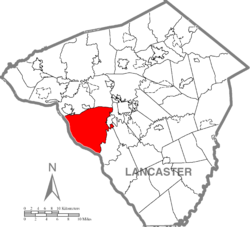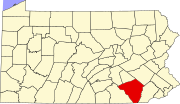
Lancaster County, sometimes nicknamed the Garden Spot of America or Pennsylvania Dutch Country, is a county in the Commonwealth of Pennsylvania. As of the 2020 census, the population was 552,984, making it Pennsylvania's sixth-most populous county. Its county seat is also Lancaster. Lancaster County comprises the Lancaster metropolitan statistical area. The county is part of the South Central region of the state.

Millersville is a borough in Lancaster County, Pennsylvania, United States. At the 2020 census, the population was 7,629 and in 2021 it was estimated at 7,593. Millersville is home to Millersville University of Pennsylvania.

Willow Street is an unincorporated community and census-designated place (CDP) in Lancaster County, Pennsylvania, United States. The population was 7,578 at the 2010 census. In the early part of the 20th century, the main thoroughfare in town was lined with willow trees on both sides for the length of the town, hence the community's name. As time passed and the town grew, the road was widened and sidewalks were installed, which required the trees be removed. Only a few of the original trees remain to this day.

Brickerville is an unincorporated community and census-designated place (CDP) in Elizabeth Township, Lancaster County, Pennsylvania, United States, with a ZIP code of 17543. The population was 1,309 at the 2010 census.
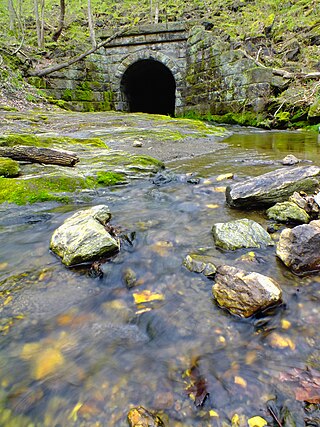
Conestoga Township is a township in west central Lancaster County, Pennsylvania. At the 2020 census, the population was 3,922.

Gap is a census-designated place (CDP) and unincorporated community in Salisbury Township, Lancaster County, Pennsylvania, United States, with a ZIP code of 17527. The population was 1,931 at the 2010 census. U.S. Route 30 passes through the town, which is also the terminus for four Pennsylvania highways: 772, 741, 897, and the heavily used 41, which leads toward Wilmington, Delaware.

Spring Township is a township in Berks County, Pennsylvania, United States. The population was 27,119 at the 2010 census, making it the second most populous municipality in Berks County after Reading.
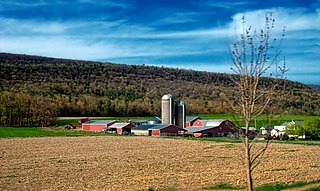
Haines Township is a township in Centre County, Pennsylvania, United States. It is part of the State College, Pennsylvania Metropolitan Statistical Area. The population was 1,663 at the 2020 census.

Lower Swatara Township is a township in Dauphin County, Pennsylvania, United States. The population was 9,557 at the 2020 census. Harrisburg International Airport and Penn State Harrisburg are located within the township. It shares a ZIP Code with the nearby borough of Middletown, and all locations in the township have Middletown addresses.
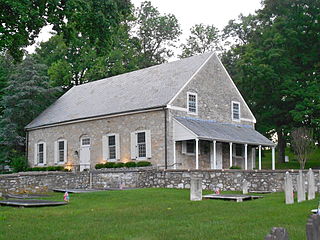
Paxtang is a borough in Dauphin County, Pennsylvania, United States. As of the 2020 census it had a population of 1,640. The borough is a suburb of Harrisburg and is one of the earliest colonial settlements in South Central Pennsylvania.

Lancaster Township is a civil township of Lancaster County, Pennsylvania, United States. It is in the central area of the county, and it immediately surrounds Lancaster City. As of the 2020 census, the township population was 18,591.
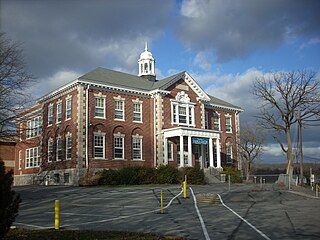
Mountville is a borough in Lancaster County, Pennsylvania, United States. The population was 3,022 at the 2020 census, an increase over the figure of 2,802 tabulated in 2010. The original Charles Chips potato chip factory was located here.

Pequea Township is a township that is located in central Lancaster County, Pennsylvania, United States. The population was 5,493 at the time of the 2020 census.

Duryea is a borough in the Greater Pittston area of Luzerne County, Pennsylvania, United States, 9 miles (14 km) south of Scranton. The Susquehanna River marks Duryea's western boundary and the Lackawanna River flows through Duryea. It was incorporated as a borough in 1901, and had a notable switching rail yard, the Duryea yard, connecting the central Wyoming Valley to destinations in lower New York and down-state Pennsylvania. Coal mining and silk manufacturing were the chief industries in Duryea's early years. The population was 5,032 at the 2020 census.
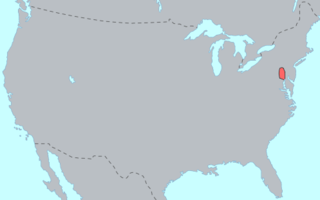
The Susquehannock, also known as the Conestoga, Minquas, and Andaste, were an Iroquoian people who lived in the lower Susquehanna River watershed in what is now Pennsylvania. Their name means “people of the muddy river.”

The Paxton Boys, also known as the Paxtang Boys or the Paxton Rangers, were a mob of settlers that murdered 20 unarmed Conestoga in Lancaster County, Pennsylvania, in December 1763. This group of vigilantes from Lancaster and Cumberland counties formed in 1763 to defend themselves from Indigenous attacks during Pontiac's War. The Paxton Boys justified their actions by claiming that the Conestoga were colluding with the Lenape and Shawnee who were attacking Pennsylvania's frontier settlements. According to historian Kevin Kenny, the Paxton Boys were Pennsylvania's most aggressive colonists.

The Conestoga River, also referred to as Conestoga Creek, is a 61.6-mile-long (99.1 km) tributary of the Susquehanna River flowing through the center of Lancaster County, Pennsylvania, United States.

Conestoga is an unincorporated community and census-designated place (CDP) in Conestoga Township, Lancaster County, Pennsylvania, United States. At the 2020 census, the population was 1,163. The Conestoga post office serves ZIP code 17516.

The Penn Manor School District is a large, rural/suburban, public school district located in Lancaster County, Pennsylvania. The Penn Manor School District encompasses approximately 110 square miles. Penn Manor School District serves residents of: Manor Township, Conestoga Township, Millersville Borough, Martic Township and Pequea Township. According to 2000 federal census data, it serves a resident population of 37,942. By 2010, the district's population was 41,376 people. In 2009, Penn Manor Sas $20,529 and the median family income was $55,708. The educational attainment levels for the Penn Manor School District population were 88.7% high school graduates and 25% college graduates.

Reinholds is an unincorporated community and census-designated place (CDP) in West Cocalico Township, Lancaster County, Pennsylvania, United States. As of the 2010 census the population was 1,803.

